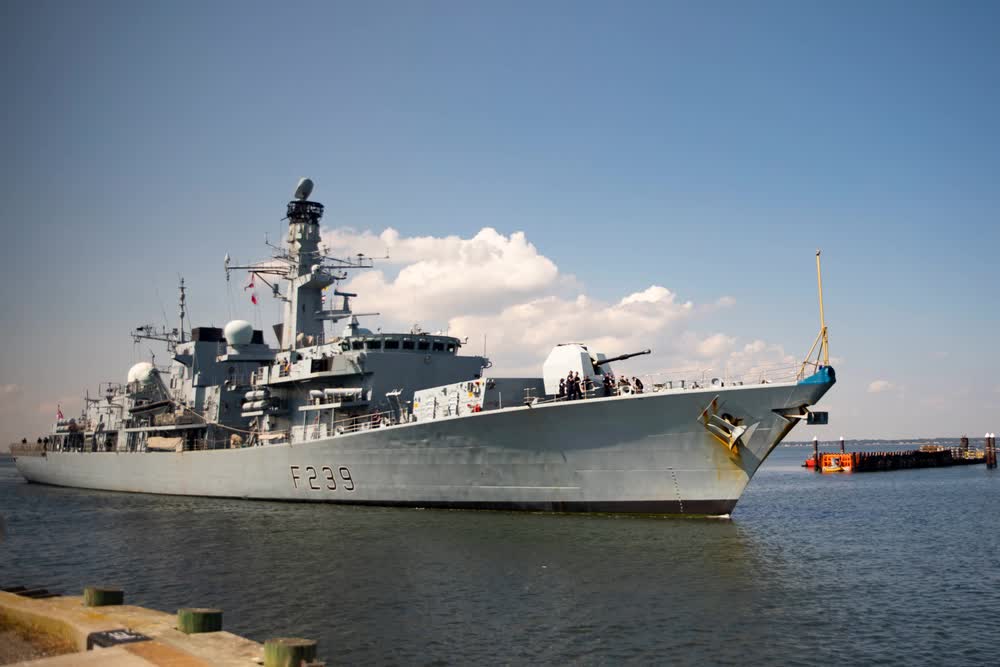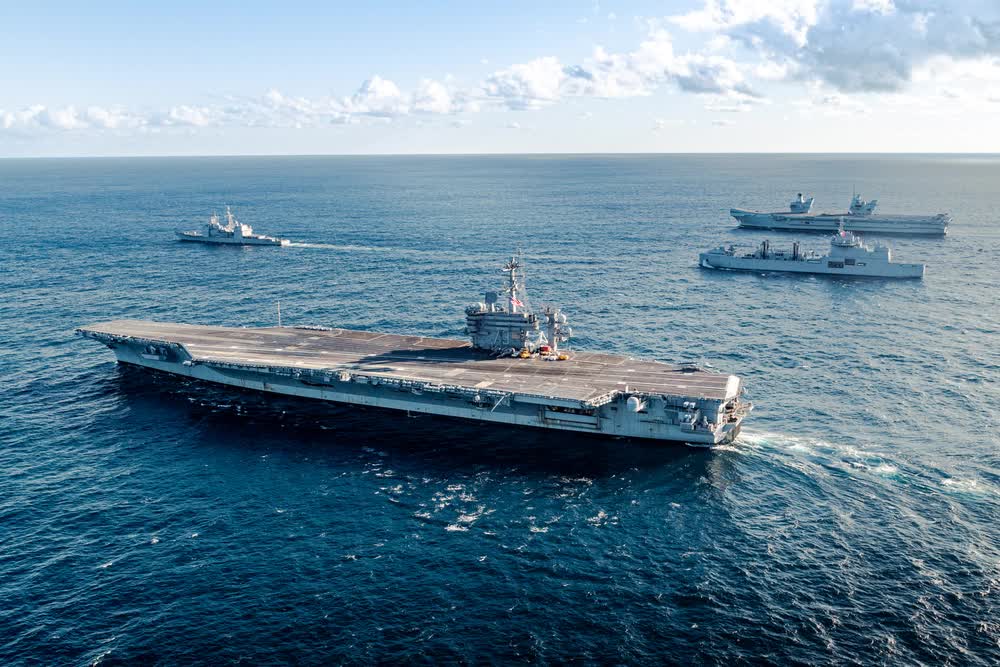The Royal Navy is going through difficult times
- By Stavros Atlamazoglou
Share This Article

At the end of the first year of the Peloponnesian War between Athens and Sparta, Pericles, a preeminent Athenian politician and general, delivered his immortal funeral oration to honor those who had perished.
Among the praise for the dead and admiration, Pericles highlighted the importance of sea power. Sea power would play a key role in the years-long conflict, and whoever harnessed it would have an advantage over his adversary.
Almost 2,500 years later, the rule of the sea remains a great matter.
Today, the U.S. Navy numbers approximately 233 active combat warships. There are also 60 non-commissioned support ships, 50 warships in reserve, and 36 on order. Although a long way from President Roland Reagan’s dream of a 600-ship naval force, the U.S. Navy is still looking to grow. The goal, according to a recent report to Congress, is a 500-ship naval force that combines manned and unmanned vessels.
To be sure, numbers aren’t everything. Despite the Chinese military’s ability to field over 700 warships and support vessels in the event of a conflict today, the U.S. Navy maintains a qualitative superiority in technology, manpower, and experience. American warships and weapon systems are better than those of near-peer adversaries. The gap might be narrowing, but America still maintains a superiority in that regard.
But in the event of a conflict, the Navy, and indeed the entire U.S. military, would lean into its alliances for help. Traditional allies like the United Kingdom and France would play a key role in the fighting, either directly participating or covering areas of operations so the U.S. Navy can move its warships into combat.
Indeed, it is this network of global partnerships that truly differentiates the United States from its near-peer adversaries. China and Russia might possess varying degrees of individual power, but they lack honest friendships that could be useful in the event of a conflict. However, the navy of America’s biggest ally isn’t in a good state.
Related: The “shadow scheme” Britain used to disperse WWII production
The Royal Navy in trouble

European navies today aren’t in a good shape and their fleets have taken a major hit. A combination of factors, including the end of the Cold War, the counterterrorism and counterinsurgency campaigns of the Global War on Terror, and the financial crisis have all contributed to the decay of European naval power.
For example, between 1999 and 2018, NATO’s European countries reduced their destroyer and frigate fleets by 32 percent and their submarine fleets by 28 percent.
The Royal Navy might have once ruled the waves but that time has long passed. Today, the British military can field just 40 surface combatants and submarines. In comparison, the U.S. Navy has about 55 vessels underway as of the first week of April. On a regular day at work, the U.S. military has more ships sailing than the entire fleet of the Royal Navy.
Specifically, the Royal Navy has 12 Type 23 frigates, eight River-class offshore patrol vessels, six Type 45 destroyers, six Astute-class attack submarines, four Vanguard-class nuclear-armed submarines, two aircraft carriers, the HMS Queen Elizabeth and HMS Prince of Wales, and two amphibious assault ships, which could double as light aircraft carriers in an emergency.
In 1991, the Royal Navy had almost twice the number of warships: In the waning days of the Cold War, the Royal Navy fielded 33 frigates, 30 nuclear attack and ballistic submarines, 13 destroyers, and three aircraft carriers for a total of 79 major surface combatants and submarines.
The British fleet isn’t just smaller, it is also more problematic. In February, for instance, the HMS Prince of Wales, the Royal Navy’s latest warship, failed to depart for a NATO exercise due to mechanical problems. To make matters worse for the Royal Navy, the HMS Prince of Wales was supposed to relieve its sister aircraft carrier and flagship, the HMS Queen Elizabeth, after it too had suffered a mechanical problem.
In the event of a near-peer conflict, the U.S. would rely on its alliances and partnerships to fight a war and maintain global order. The state of the Royal Navy, the closest ally of the U.S. Navy, should concern officials in London and Washington alike.
Read more from Sandboxx News
- Becoming a Marine Raider officer
- Peak stubbornness: When Navy SEALs trained with Slovenian mountain warfare troops
- The Navy’s plan to keep its warships in the fight: Rearming at sea
- These elite Marines combine tradition with special operations innovations
- 31 years after Black Hawk Down, this Army Ranger receives his Silver Star
Related Posts
Sandboxx News Merch
-

‘AirPower’ Classic Hoodie
$46.00 – $48.00 Select options This product has multiple variants. The options may be chosen on the product page -

‘Sandboxx News’ Trucker Cap
$27.00 Select options This product has multiple variants. The options may be chosen on the product page -

‘Kinetic Diplomacy’ Bumper Sticker (Black)
$8.00 Add to cart
Stavros Atlamazoglou
Greek Army veteran (National service with 575th Marines Battalion and Army HQ). Johns Hopkins University. You will usually find him on the top of a mountain admiring the view and wondering how he got there.
Related to: Military Affairs

Could France undertake the role of Europe’s nuclear protector? Potentially

What are the differences between the six generations of fighter aircraft?
Sandboxx News
-

‘Sandboxx News’ Trucker Cap
$27.00 Select options This product has multiple variants. The options may be chosen on the product page -

‘AirPower’ Classic Hoodie
$46.00 – $48.00 Select options This product has multiple variants. The options may be chosen on the product page -

‘AirPower’ Golf Rope Hat
$31.00 Select options This product has multiple variants. The options may be chosen on the product page -

‘Sandboxx News’ Dad Hat
$27.00 Select options This product has multiple variants. The options may be chosen on the product page
